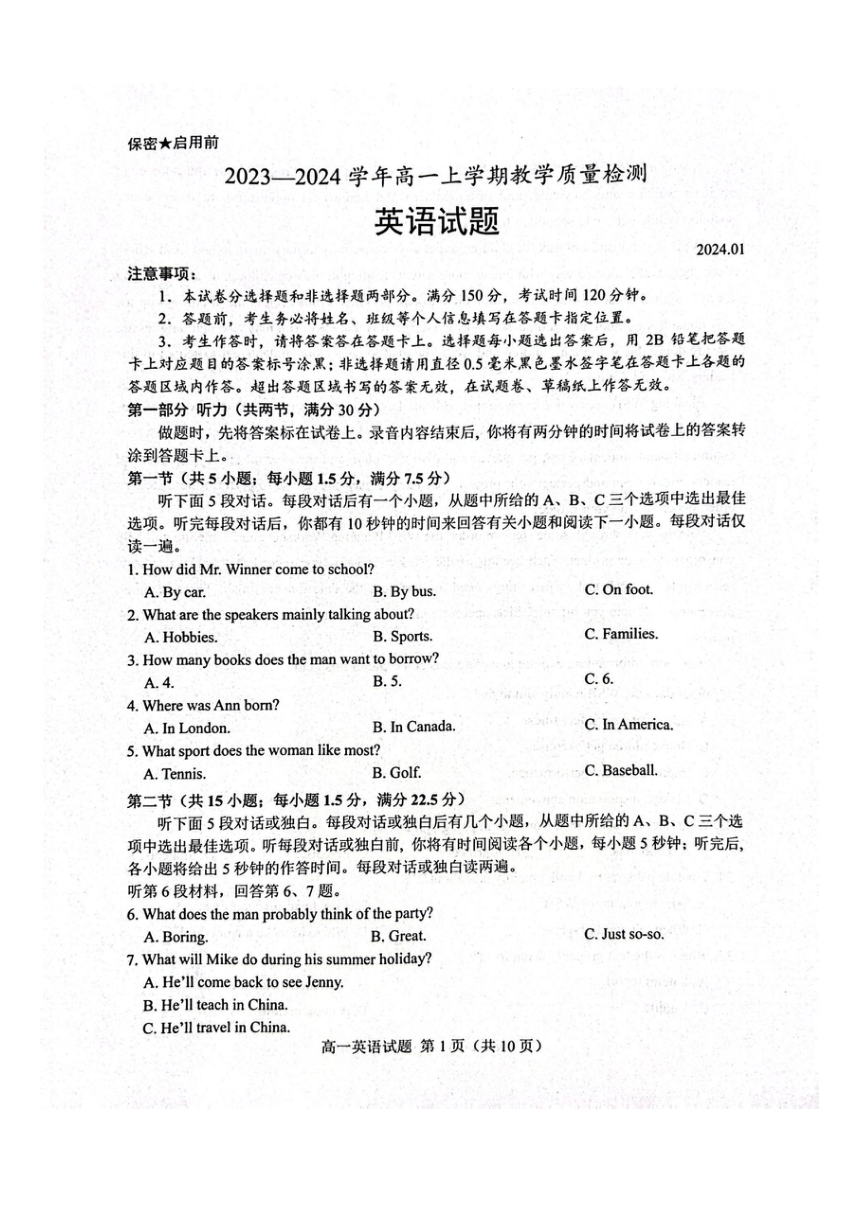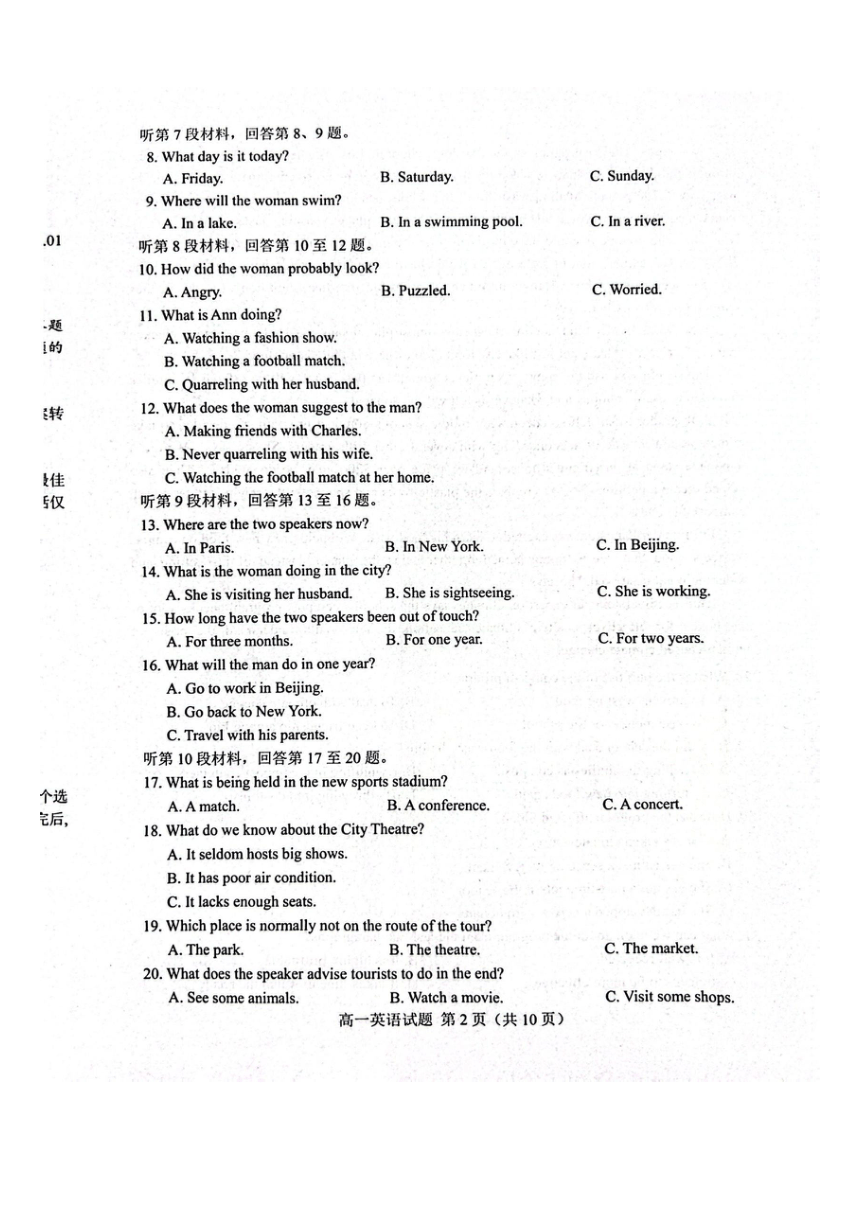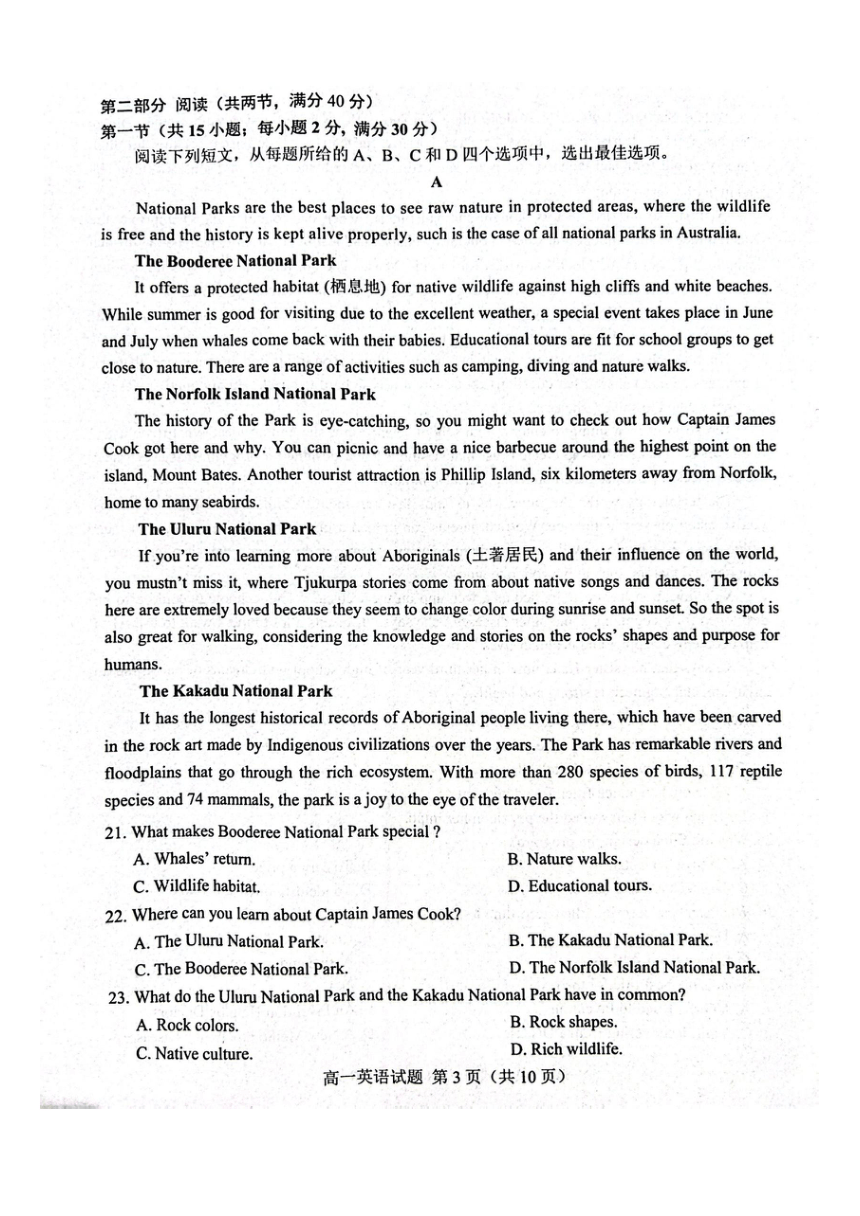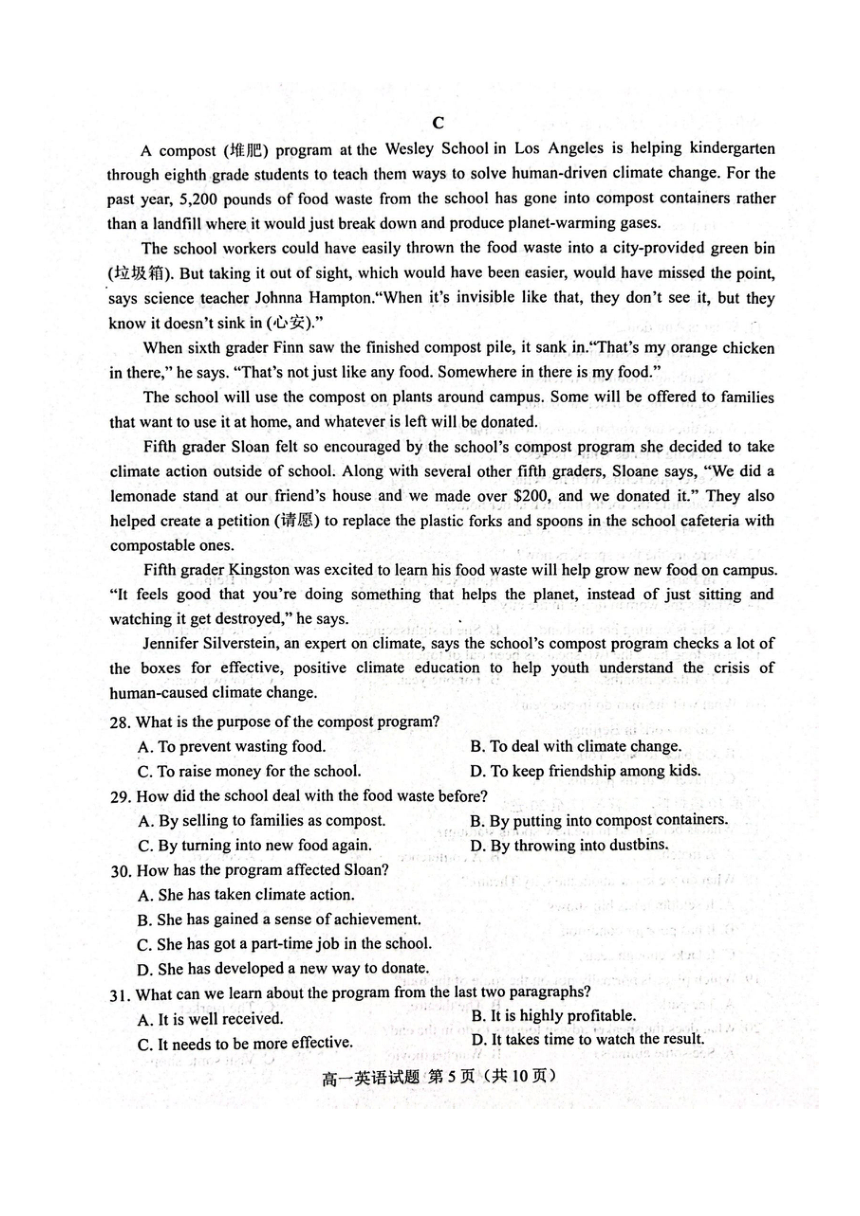山东省菏泽市2023-2024学年高一上学期1月期末英语试题(无答案)
文档属性
| 名称 | 山东省菏泽市2023-2024学年高一上学期1月期末英语试题(无答案) |  | |
| 格式 | docx | ||
| 文件大小 | 6.2MB | ||
| 资源类型 | 教案 | ||
| 版本资源 | 通用版 | ||
| 科目 | 英语 | ||
| 更新时间 | 2024-02-02 13:20:16 | ||
图片预览





文档简介
C
A compost (program at the Wesley School in Los Angeles is helping kindergarten
through eighth grade students to teach them ways to solve human-driven climate change.For the
past year,5,200 pounds of food waste from the school has gone into compost containers rather
than a landfill where it would just break down and produce planet-warming gases.
The school workers could have easily thrown the food waste into a city-provided green bin
)But taking it out of sight,which would have been easier,would have missed the point,
says science teacher Johnna Hampton."When it's invisible like that,they don't see it,but they
know it doesn't sink in(心安).”
When sixth grader Finn saw the finished compost pile,it sank in."That's my orange chicken
in there,"he says."That's not just like any food.Somewhere in there is my food."
The school will use the compost on plants around campus.Some will be offered to families
that want to use it at home,and whatever is left will be donated.
Fifth grader Sloan felt so encouraged by the school's compost program she decided to take
climate action outside of school.Along with several other fifth graders,Sloane says,"We did a
lemonade stand at our friend's house and we made over $200,and we donated it."They also
helped create a petition (to replace the plastic forks and spoons in the school cafeteria with
compostable ones.
Fifth grader Kingston was excited to learn his food waste will help grow new food on campus.
"It feels good that you're doing something that helps the planet,instead of just sitting and
watching it get destroyed,"he says.
Jennifer Silverstein,an expert on climate,says the school's compost program checks a lot of
the boxes for effective,positive climate education to help youth understand the crisis of
human-caused climate change.
28.What is the purpose of the compost program
A.To prevent wasting food.
B.To deal with climate change
C.To raise money for the school.
D.To keep friendship among kids.
29.How did the school deal with the food waste before
A.By selling to families as compost.
B.By putting into compost containers.
C.By turning into new food again.
D.By throwing into dustbins.
30.How has the program affected Sloan
i/
A.She has taken climate action.
B.She has gained a sense of achievement.
C.She has got a part-time job in the school.
D.She has developed a new way to donate.
31.What can we learn about the program from the last two paragraphs
A.It is well received.
B.It is highly profitable.
C.It needs to be more effective.
D.It takes time to watch the result.
高一英语试题第5页(共10页)
A compost (program at the Wesley School in Los Angeles is helping kindergarten
through eighth grade students to teach them ways to solve human-driven climate change.For the
past year,5,200 pounds of food waste from the school has gone into compost containers rather
than a landfill where it would just break down and produce planet-warming gases.
The school workers could have easily thrown the food waste into a city-provided green bin
)But taking it out of sight,which would have been easier,would have missed the point,
says science teacher Johnna Hampton."When it's invisible like that,they don't see it,but they
know it doesn't sink in(心安).”
When sixth grader Finn saw the finished compost pile,it sank in."That's my orange chicken
in there,"he says."That's not just like any food.Somewhere in there is my food."
The school will use the compost on plants around campus.Some will be offered to families
that want to use it at home,and whatever is left will be donated.
Fifth grader Sloan felt so encouraged by the school's compost program she decided to take
climate action outside of school.Along with several other fifth graders,Sloane says,"We did a
lemonade stand at our friend's house and we made over $200,and we donated it."They also
helped create a petition (to replace the plastic forks and spoons in the school cafeteria with
compostable ones.
Fifth grader Kingston was excited to learn his food waste will help grow new food on campus.
"It feels good that you're doing something that helps the planet,instead of just sitting and
watching it get destroyed,"he says.
Jennifer Silverstein,an expert on climate,says the school's compost program checks a lot of
the boxes for effective,positive climate education to help youth understand the crisis of
human-caused climate change.
28.What is the purpose of the compost program
A.To prevent wasting food.
B.To deal with climate change
C.To raise money for the school.
D.To keep friendship among kids.
29.How did the school deal with the food waste before
A.By selling to families as compost.
B.By putting into compost containers.
C.By turning into new food again.
D.By throwing into dustbins.
30.How has the program affected Sloan
i/
A.She has taken climate action.
B.She has gained a sense of achievement.
C.She has got a part-time job in the school.
D.She has developed a new way to donate.
31.What can we learn about the program from the last two paragraphs
A.It is well received.
B.It is highly profitable.
C.It needs to be more effective.
D.It takes time to watch the result.
高一英语试题第5页(共10页)
同课章节目录
